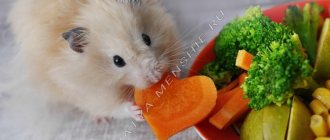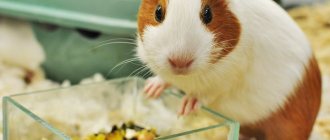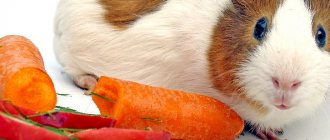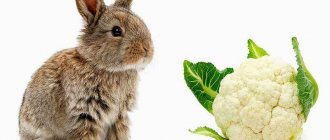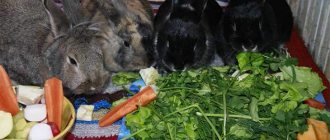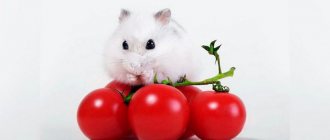Novice breeders ask a fair question: what can they feed a chinchilla at home? The thing is that standard grain food for average rodents does not contain enough useful substances. Therefore, you need to feed your pet a whole list of healthy foods.
In general, little is known about the rules of feeding chinchillas due to the fact that this animal has become popular only in recent years. All due to the fact that they were not perceived as full-fledged companions and smart enough four-legged friends. Let's figure out what stereotypes exist about these animals and which ones relate to their diet.
How to feed at home?
The main rule: do not forget that the chinchilla is a small animal and eats very little . Therefore, it is important to maintain a balance of essential vitamins and substances in her food. How many times a day should you give food? Such an animal should be fed no more than once a day , preferably during waking hours. This rodent is a nocturnal animal. This is important to consider when feeding. Between 18:00 and 20:00 it’s a good idea to fill your pet’s bowl with food.
For an adult animal, 20-30 g of granulated food is enough. Observation will help determine the amount of food: if the bowl is not empty before the next meal, it is worth reducing a couple of grams. Each pet is individual and will need a different amount of food to feel full. Don't forget to fill a separate feeder with hay. The animal eats the amount it needs, and uses the rest as bedding. It is important to replenish the drinking bowl with fresh water daily. Don't neglect treats and supplements.
How do chinchillas sleep?
Cell preparation
Before purchasing an animal, a cage for the chinchilla should already be prepared. This will be her home, a home and a refuge in which she will sleep, eat, bathe and give birth.
Large cage for chinchilla
Therefore, there are certain requirements for the cage:
- The cage should be located in a cool place. Chinchillas cannot tolerate heat; the optimal air temperature for them is 20 degrees. If it is 25 degrees in the cage, then the animal will overheat its body; at 30 degrees it will die;
- The size of the cage should be approximately 50x50x100 cm, that is, it must be of a tower type, greater in height than width and depth. This is a very active animal; the cage must have floors with stairs so that it can run a lot;
- If possible, try to hang the feeder and water bowl, otherwise the chinchilla may turn them into a toilet;
- There should always be a piece of chalk or a special stone in the cage for grinding down teeth. You can buy it at any pet store;
- The bottom of the cage should be lined with sawdust. The animal goes to the toilet anywhere, they cannot be tamed to the toilet, so the sawdust will have to be changed often. Although some people succeed in toilet training;
- They have fur that is very sensitive to dirt; it even reacts to sweaty human palms. Therefore, the animal often bathes, but not in water, but in special zeolite sand. They do not require water for these purposes.
Taking sand baths
Special sand for bathing
By the way, when taking sand baths, chinchillas are so violent that dust will fly in all directions. It is not advisable to carry out these procedures in a cage so as not to clean up later. The ideal solution is a three-liter jar. We poured sand in a layer of 5 cm, put the animal in there, and left it in a cool place for an hour. Although the duration can be reduced to half an hour, but not less.
Chinchilla bathes in the sand
A chinchilla should be bathed at home a couple of times a week. If your home is hot (i.e. about 25 degrees) and there is high humidity, then you should bathe every other day. The thing is that the animal does not have sweat glands, and without these procedures you can forget about beautiful, healthy fur.
In the wild, they bathe in volcanic dust, but never in sand. And at home, you also need to follow this rule - only special sand. If you add regular river water, you will get at least two problems:
- Skin diseases, fungus;
- Ugly, chewed, tousled fur, as if the chinchilla had been in a centrifuge.
A visual technique for a sand bath
For preventive purposes, for example, against lichen, the antifungal drug fungistop is sometimes added to the sand in the proportion of 1 large spoon of the drug per 1 kg of sand.
Animal behavior at home
Chinchillas require much less care than, for example, . The main thing is to keep it cool. If the animal is released from the cage, it will immediately begin to explore every crevice in the room, because... their ancestors lived in endless labyrinths of rock slides that appeared after volcanic activity and earthquakes.
Please note that they try everything to their teeth, this is the instinct of a rodent, so you should not leave them outside the cage unattended. Cases of biting live wires with inevitable death are very common.
Chinchillas don’t really need to communicate with people, they are somewhat cowardly animals, and prefer to play with themselves, simply running around the floors of the cage and gnawing everything in sight (that’s why a spacious cage is needed). Also keep in mind that this is a very shy animal and can die from fright.
Also, you should not pick up a chinchilla by the back, because... she may shed her fur. Here, for example, is a chinchilla, photo below, which did just that:
Chinchilla shed a tuft of fur
This is normal, so they have a chance to escape from the predator's mouth. Even though we are not going to eat them, the instinct remains. But let us warn you again - they die from severe fright! And being grabbed by the scruff of the neck from behind is also frightening.
Domestic chinchillas are mostly nocturnal, so get used to the nightly rustling, squeaking, and stomping that can last half the night.
What is possible: list
Dry granulated food is considered to be the most suitable food for chinchillas. A 400-gram pack is enough for an adult animal for a month . After opening the package, you should pour its contents into a container that is hermetically sealed. This way the provisions will better retain their properties. This food is useful because it is similar to the food a rodent eats in nature and contains grains, herbs and vegetables. The positive side of this drug is its hardness. With its help, the animal grinds down its teeth, which are constantly growing.
It is important to purchase food from one manufacturer. If the food is changed regularly, the animal is not immune from digestive disorders.
It is important to place hay in your pet's cage. For convenience, they use a special sennitsa, which is easy to find in a pet store. The amount of dried herb should not exceed one gram of granulate. You can prepare such bait yourself, but it is better to use the services of a pet store. The fact is that most herbs are not suitable for chinchilla consumption. The animal can become poisoned and get a digestive tract disorder.
Not a single rodent will refuse to eat complementary food, which is worth buying in a pet store in the form of granules. Supplementary food differs from support food in color and softness . Granular supplements are enriched with minerals, amino acids and vitamins.
Complementary foods help strengthen your fur baby's immune system and heart, as well as improve blood circulation. However, it is not difficult to collect additional food yourself. It will require cereals, roots, berries and leaves. It is important to add all components exclusively in dried form.
What is a chinchilla like as a pet?
Useful tips
Keeping a chinchilla and feeding it properly is not difficult. But you can’t do without useful advice from experienced breeders of medium and large rodents.
The following recommendations for inexperienced chinchilla owners regarding nutrition are as follows:
- Determine in advance how much the chinchilla food you will use costs. Set aside money for the maintenance of the animal for a month in advance;
- Do not give your pet candied fruits and dried fruits purchased in a human store. They contain sugar that is dangerous for rodents. Instead, give homemade dried bananas, apples; you can feed your pet with them all year round;
- Choose fairly small granules. So, if a chinchilla accidentally swallows one without chewing, there will be no health consequences;
- Change food regularly, albeit gradually. In order for your animal's stomach to function properly, do not force it to eat the same thing all its life.
What they like to eat: treats
Just like a human, a chinchilla will enjoy a treat. Don’t think that goodies are harmful, because they also have benefits. It’s easy to prepare a supplement that is beneficial for your pet’s body yourself . It will benefit:
- corn. It is rich in magnesium, calcium and potassium. A few grains a day will have a positive effect on the animal’s well-being;
- viburnum. Two berries a week and the chinchilla’s digestion will improve;
- calamus root. Helps prevent cramps. One centimeter of root per week will have a beneficial effect;
- carrot. The condition of the fur and heart will be improved by one circle of fruit. Treats should be given no more than three times a week;
- rose hip. It will contribute to the overall strengthening of the pet’s body. Dosage - 4 pieces per month;
- plantain. The functioning of the gastrointestinal tract is regulated, and you just need to feed the chinchilla two leaves per decade.
The pet will also like lingonberries and cranberries, hawthorn and currants, apples, blueberries and chokeberries . It is worth feeding the rodent with herbal delicacies: alfalfa and parsley, sorrel and mint, chamomile and nettle, calendula and oregano. As for trees, it is better to use willow and apple trees, ash, mulberry and birch, aspen and elm for treats. Oak and pear are contraindicated. These plants have strengthening properties, and the animal does not go to the toilet quickly.
What are the personalities of chinchillas?
Chinchilla content: permitted and prohibited products
Chinchillas are kept on ready-made pelleted food, but also on grass and grains. Therefore, it is worth noting which products are included in the green sector.
- The following greens would be suitable: salad
- spinach and sorrel
- plantain
- calendula
- coltsfoot
- chicory
- parsley
- jasmine
- blooming Sally
- nettle
- alfalfa
- clover
- mint
- thyme
- chamomile
- Melissa
- goat's rue
- series
- echinacea
- dandelion
- yarrow
- calamus and burdock root
- from the apple tree
- Legumes are extremely healthy and loved, especially: lentils
- white and red beans
- beans
- peas
- soybeans
Food should be varied
- Don't forget about grain crops: wheat
- corn
- and also buckwheat
- rice
- millet
- oats
- and barley
- Vegetables worth noting: carrots
- pumpkin
- young corn
- Bell pepper
- kohlrabi
- zucchini
- zucchini
- squash
- Jerusalem artichoke
For a treat
- As for fruits, you should choose: apples
- pears (in moderation)
- bananas
- figs
- strawberries
- lingonberries
- rosehip
How to choose hay for a chinchilla
Red sector or what not to give to chinchillas:
- Fresh fruits and vegetables
- Nuts and seeds in large quantities. You should also be careful with almonds and pine nuts - they can be given no more than 1-2 times every 2 weeks!
- Herbs that are poisonous to chinchillas: fern
- horsetail
- buttercup
- rushnik
- black nightshade
- dope
- St. John's wort
- white hellebore
- cornflower
- raven eye
- acacia
A few words about the benefits of tea
Vitamins and their benefits for pets
Vitamin complexes are not only intended for young, sick, lactating, pregnant and weakened animals. The intake of vitamins in food will protect your pet from possible illnesses. These supplements are sold in pet stores and come in liquid, powder or solid form.
Tablets and powders are extremely difficult to feed to a fluffy dog. Therefore, it is better to choose fortified complementary foods in liquid form . So it can be easily mixed into water and the rodent’s diet will be significantly enriched.
Make sure that there are always salt and mineral stones in the chinchilla's cage. They will have a beneficial effect on the animal’s body and help it take care of its constantly growing teeth.
Dry yeast can replenish protein reserves. They will also help enrich the chinchilla’s body with B vitamins. It is important to add them to the food a little at a time.
Pros and cons of keeping chinchillas in an apartment.
Interesting fact
What kind of fatty squirrel is this? – Ask the children who saw chinchillas for the first time. They will be very surprised to learn that this is not so. They will ask you to hold this fluffy, defenseless miracle in your arms, and the cunning chinchilla will look into their soul with its wet eyes, and now you are already the happy owner of a pet. Don’t worry, the chinchilla is an unpretentious animal, hypoallergenic, does not shed seasonally, the thick undercoat prevents parasites (fleas, ticks) from multiplying, and is completely odorless (no sweat or sebaceous glands, very neat).
Big fans of nuts, with the help of which it is easy to lure them into the cage after a walk. Nuts are not only a delicacy, but also a nutritious, highly digestible food. Hazel is especially useful (contains a lot of natural fats up to 70%, vitamins A, B, E). Give only in peeled and raw form, in small quantities, since excessive consumption of nuts will lead to indigestion and obesity (remember - not protein).
The chinchilla has unusual fur - about 60 hairs grow from one hair follicle. Luxurious fur attracts narcissistic girls, and the clothing market is replete with chinchilla fur coats. This is terrible, because to sew one fur coat you will need 200 carcasses of cute creatures. Chinchilla fur coats fit better on chinchillas than on ladies!
Menu of a pregnant female
The diet of an animal expecting cubs does not differ significantly from the diet of others. Veterinarians insist on increasing the protein content in food. If the female begins to drink and eat much more, then this is normal. After all, another living creature is forming and developing inside it, which also needs to be fed. The main thing: the expectant mother is prohibited from overfeeding , otherwise obesity and health problems cannot be avoided. Also, the animal’s menu should be supplemented:
- sprouted grain. Reproductive function will return to normal due to the vitamin E content in complementary foods;
- food of animal origin. You'll have to go to the pet store to get it;
- calcium Once a day, a quarter of a tablet will help the expectant mother replenish the supply of this microelement, since the baby “takes” it from the female;
- apple Every day, 3 weeks before giving birth, it is worth introducing an eighth of the fruit into the diet of a pregnant animal;
- beebread. A couple of balls a day will have a beneficial effect on the health of both;
- alfalfa and strawberry leaves, flax seeds and rose hips, calendula flowers and oatmeal. They will bring the rodent's lactation to the required state.
It is important to exclude mint, thyme and lemon balm from the diet of a pregnant female..
What to feed a chinchilla after giving birth?
Important Principles
The basis of any food is its good quality. That is, he cannot be
- moldy,
- musty,
- stale,
- rancid.
Do not harvest green fodder in contaminated areas:
- on the sides of the roads,
- in industrial areas,
- on fields that have undergone chemical treatment against pests.
You can feed only washed and dried vegetables, fruits and herbs. Green leaves should be dried. Do not feed wet greens, only dry ones.
https://youtube.com/watch?v=xZ7ibGkn6w8
You need to gradually get used to new, especially green food. After each increase in serving size, monitor the condition of your pets.
Follow the feeding schedule.
- Daily.
- One-time.
- Regular.
- Late evening.
Evening feeding is explained by the fact that these animals are active at night. This is written in detail in the article (Farm 27, “Chinchilla at home”).
In the morning you can feed only when everything from yesterday has been eaten. The main evening food should only be poured into an empty and clean feeder.
The chinchilla's body is designed for unfavorable ascetic living conditions. They have a very long intestine, designed to extract maximum benefit from the meager food that they still have to run for. This is what happens in nature. Therefore, by creating conditions that are close to natural, you will save your pet from premature death. And for this you need to pamper him less, feeding him all sorts of goodies.
What's not allowed?
The fluffy rodent has sensitive digestion. Therefore, the following products are prohibited from being given to him:
- meat products;
- bakery products;
- prepared human food;
- eggs;
- fermented milk products;
- products whose quality and freshness are questionable;
- mushrooms;
- pasta;
- roasted seeds and nuts;
- raw potatoes, lettuce and fresh cabbage;
- sugar-containing products;
- chips, popcorn, fast food.
These products will not bring any benefit to your pet. They are saturated with fat and extremely high in calories. So the mentioned food will not have a beneficial effect on the development and growth of the pet, and will even cause obesity . Even if the chinchilla likes such products, giving them is strictly prohibited.
Description
This is a small animal whose skeleton can become shorter in life-threatening situations or to be able to crawl into narrow holes. The forelimbs have five fingers, the hind limbs have four. Thanks to this, the animal jumps well in length and height.
Appearance
Large head, turning into a short neck and a round small body. It can grow up to 30 centimeters in length. Weight is usually about 800 grams, females are larger than males. The ears are protected by a membrane that can close the ear canal from sand. The fur coat is very dense and soft. They can make a large number of different sounds. They have 20 teeth. Newborn babies have 12 teeth at once.
Features of color, breed
Here are the main breeds and colors of chinchillas with photos, names, and descriptions. The main color found in the wild is gray or ash-colored fur, which is much lighter on the belly. However, after artificial breeding there are others.
Scottish breed
These animals have a silver-gray coat color. Very calm animals, they love privacy. The Scottish Fold Chinchilla is good for those who are often away from home.
Dark velvet
The black velvet chinchilla was bred in the 60-70s of the twentieth century. Basically, the color of the coat is black with light splashes on the legs and abdomen.
The rich color indicates the quality of the fur. The black chinchilla is a very beautiful animal with a wayward character.
White velvet
It is obtained as a result of the fusion of the Black Velvet and Wilson White breeds. This breed is mostly white, but silver chinchillas can also be found. The yellowness of the fur reduces the quality and price of it.
Brown velvet
The result of the interaction of black and beige breeds. The fur can be the color of wood or chestnut.
Beige breed
Occurred due to gene mutation. Characteristic is the coral color of the eyes and ears.
However, the main breed is the gray chinchilla - this is the most common color.
Look at the photos below to see what this chinchilla breed looks like:
Character, habits
There are several types of characters. Each individual has its own character and habits. They all like to sleep during the day and stay awake at night. Not particularly friendly to other animals.
The most typical characters of rodents:
- Choleric people are very active, they stay awake a lot. When frightened, it will rush around the cage, sweeping away everything around it. Long walks are undesirable, as they provoke overexcitation of the nervous system, and then lethargy of the animal. He likes to sleep on his side with his legs outstretched. It is possible to train, but it will take a long time and hard work.
- Sanguine people are active, energetic. Daytime sleep is long and sound. They love to make different sounds. Cholerics are much easier to train. They have a good memory.
- Phlegmatic people are sedentary and very calm. They are practically not overexcited. It is difficult to train, but if you succeed, then in the future they will obey you unquestioningly.
- Melancholic people are the laziest and calmest. Very shy. It is simply impossible to overstimulate them. It is imperative to walk the animal, otherwise there is a risk of obesity and disease. They cannot be trained.
Lifespan
Depends on the conditions of detention and nutrition. Typically this period is about ten to seventeen years.
Diet example
A person will not like to eat the same food every day. Not everyone can eat buckwheat for a week, for example. So why subject your pet to the same torment? A chinchilla needs a complete and varied diet. It will not only be tasty for the animal, but also healthy. Do not forget that the pet is fed once a day in the evening, when the animal is awake .
On the first day, you should give your pet 15 g of granules. 5 g of rose hips and the same amount of a mixture of corn and sunflower seeds will help supplement the required daily amount of food.
The second day is 20 g of granulated food and 10 g of dried apple.
The diet for the next day consists of 10 g of food in granules, 1/2 walnut kernels and 10 g of a mixture of oatmeal and flax seeds.
There are a lot of menu variations. Use approved ingredients and pleasantly surprise your pet every day.
Types of feed
A chinchilla can be fed a variety of foods. Some of them are mandatory and form the bulk of the daily diet.
Roughage
Rough feed includes hay and tree branches. These animals' digestive system is designed in such a way that if there is no hay, they can die suddenly. You can purchase the finished product in the store. It is better to give preference to hay, which consists of forbs (timothy, dandelion, clover, vetch, etc.). Hay is also necessary for grinding down the back teeth - prepainters.
Some owners make hay themselves, but in this case you need to be extremely careful. Pathogenic microorganisms, dangerous fungi and mold can multiply in the harvested hay. This product should not be given to a pet rodent. This can cause severe poisoning, even death.
To destroy pathogenic microorganisms that may be present in the hay, it is necessary to use special products from veterinary pharmacies. After treatment with this composition, all hazardous elements are neutralized.
In addition to hay, the diet of a domestic chinchilla should always include branches of bushes and trees. With their help, the pet regularly sharpens its teeth (incisors).
Herbs and plants
Herbs and plants are useful supplements of plant origin that should be given to your pet in limited quantities. The daily norm is up to 5-10 g.
Ready mixes
In the store you can buy ready-made mixtures for feeding pet chinchillas. High-quality food contains all the necessary vitamins and mineral complexes necessary for the healthy growth and development of your pet.
The composition of ready-made mixtures includes different components: grains, cereals, seeds, bran, etc.
Cereals
Grain mixtures form an important part of the daily diet of pet chinchillas. This product contains all the necessary vitamins, minerals, proteins, fats and other beneficial microelements.
It is not advisable to feed your pet one type of grain. Priority is given to feeding a mixture of different grains.
Vegetables and fruits
Juicy foods include fresh vegetables and fruits. These products are a real storehouse of useful vitamins and minerals. They are served to your pet as a treat in small pieces. Fruits and vegetables can only be given to chinchillas in dried form.
After feeding a new product, the owner needs to monitor the condition of the rodent. If symptoms of intestinal upset are observed, it is better to exclude this product from the diet.
A chinchilla should not be fed spoiled, rotten, stale or unripe fruits and vegetables! Such feeding will lead to illness and death of the pet.
Vitamins and treats
The animal should receive the bulk of its vitamins from daily food. During cold weather, additional vitamin supplements should be introduced into the diet. You can buy them in the store.
You can diversify your rodent's menu with various delicacies - berries, nuts, fresh and dried fruits. It is better to alternate such products and be sure to dose them. Each complementary food is given in strictly limited portions. Overeating on treats can cause serious harm to your health.
Rules for handling newborn puppies
A newborn puppy is fully prepared for life. His eyes are open and his body is covered with fur. Usually, immediately after birth, the cubs crawl under the female’s belly and stay there for some time until their skin is completely dry.
If the puppies are active and do not fight at their mother's nipples, then there is no need to feed them. Another indicator of the condition of newborn chinchillas is weight gain, which must be regularly monitored.
Table 1. Correlation between age and weight of chinchilla puppies.
| Puppy age | Puppy weight |
| newborn | 30-50 grams |
| 7 days | 45-55 grams |
| 14 day | 65-90 grams |
| 3 week | 75-100 grams |
| 1 month | 120-130 grams |
The weight of newborn puppies should be monitored weekly.
Prices for electronic scales
Electronic kitchen scales with bowl
In some litters, puppies may be born with their eyes closed. This happens if babies are born prematurely. If you can’t see a veterinarian, you can help your little chinchilla yourself
Soak a cotton swab or pad in a warm decoction of chamomile or calendula and very carefully stroke from the corner of the eye to the puppy’s nose
The condition of premature and weak cubs must be carefully monitored; stronger brothers can drive them away from the female’s nipples. Lack of food quickly exhausts puppies, so in this case they need to be supplemented with a special milk replacer. You can buy it at a pet store.
Feeding a chinchilla puppy with a milk replacer
Video - Feeding a newborn chinchilla
The video demonstrates the process of syringe feeding a puppy that does not have enough mother's milk. Please note that the mixture must be served carefully so that the baby does not choke.
Pregnancy in chinchillas lasts about four months and in the vast majority of cases ends in an easy and fairly quick birth. During the period of childbirth, it is necessary to provide the female with a safe place, protected from extraneous noise and bright light, in which she can safely produce offspring.
When do chinchillas reach maturity?
Chinchillas that are 5 months old are considered sexually mature. But females are fertilized only at 10 months of age. The number of fertilizations per year is no more than three. After each lambing, the female gives birth to one to three cubs.
| On a note. Correct pair selection: inbreeding of chinchillas is not allowed, chinchillas containing the “velvet” gene in their genotype are not crossed (half of the offspring of such animals die), only adult and healthy chinchillas are taken to produce offspring. The optimal ratio of male chinchillas is 1 to 3–4 females. |
Actually, breeding and keeping rodents is based on 3 elephants - birth rate, fur quality, survival rate. It is the quality of the fur that determines the health of the chinchilla: the better it is, the healthier the animal itself. And the quality of the fur, as a result, depends on what the chinchilla was fed, that is, on its diet. Experienced farmers have a saying: if you want to know what a chinchilla’s diet was, look at its back (fur). A real specialist, just looking at the “casing”, will immediately tell what kind of diet the chinchilla had and whether the feeding technology was followed.
Taking care of your health
In order for your pet to live as long as possible, you need to closely monitor its health and take urgent treatment measures at the slightest deviation.
Major diseases
With proper care and nutrition, the animal will be healthy throughout its life. But it is better not to skip regular visits to the veterinarian, even if there are no alarming symptoms.
The main diseases include:
- inflammation of the eyes - conjunctivitis. Due to drafts or mechanical injury;
- runny nose (catarrh) – with allergic reactions or colds;
- inflammation of the ears;
- lung diseases;
- malocclusion;
- discolored teeth. Normally – yellow;
- skin diseases - lichen, fungus, alopecia, parasites;
- diseases of the digestive system - constipation, diarrhea, inflammation of the stomach, intestines, flatulence;
- diseases of the genitals - vaginitis, hair rings, mastitis;
- jaundice, cystitis;
- thermal shock due to overheating.
Treatment and prevention
Therapy is carried out only as prescribed by a veterinarian and under his close supervision. To avoid diseases, you need to follow preventive measures: regularly clean the cage and its elements, properly prepare the diet and do not make sudden changes, provide a sufficient amount of water, observe the temperature regime and devote time to play with your pet.
It is impossible to know everything about chinchillas, since each of them has its own characteristics. However, following general recommendations will help to successfully cohabit and breed these animals at home.

